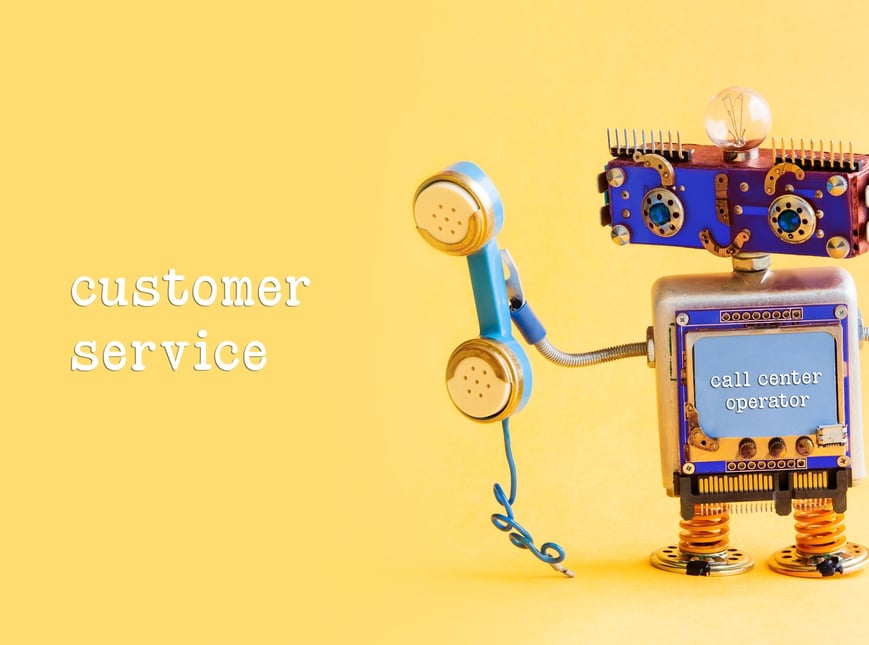IVR is Here to Stay
Maximizing customer satisfaction at minimum cost is the top goal for any business offering customer service. Many businesses use Interactive Voice Response (IVR) technology to automate frequently performed phone transactions via pre-recorded voice prompts and dual-tone multi-frequency (DTMF) tones of the phone keypad (i.e., “Press 1 for Sales, press 2 for Billing, press 3 to speak to a representative….”). The most common uses for IVR include the automation of service selection, caller identification, self-service, and caller preparation.
Today’s use of IVR is generally helpful to callers, but listening to lengthy menu options can significantly lower the customer experience. In this blog, we consider how we can use IVR to its fullest potential, and what will IVR be like in the future.
Looking ahead, IVR will continue to play an important role in customer service by automating service selection, caller identification, self-service, and caller preparation. However, the future of IVR lies in combining robotic process automation with a human connection, where bots deliver self-service options across all channels and still provide a path to a speak to a live agent.
Benefits for Callers
Perhaps the best benefit that IVR can offer the caller is reduced or no waiting time for service. Rather than wait on hold for an agent to route a call, the caller can navigate IVR’s self-service options and be directed to the customer service agent who is best able to address the caller’s needs.
Issues with Today’s IVR
From the caller’s perspective, there are many issues with today’s IVR. It can be difficult to navigate—IVR has multiple layers, all options must be spoken (adding time to the overall call), the caller must listen to all of it, and the caller must remember which option to select. Should the caller forget which number to press, the caller must listen to the entire menu all over again. Instead of asking callers, “What would you like?” both standard and speech recognition-based IVR systems typically spell out options one way or another.
What’s more, DTMF button selection requires the caller to take the phone from the ear, further increasing the chance of not hearing the next option and having to replay all menu prompts.
A badly designed IVR experience often hides the option of connecting to a live agent in order to drive automated outcomes, forcing callers to listen to all options before discovering that speaking to a real person is not an option. This experience wastes the caller’s time and lowers customer sentiment dramatically.
For organizations that use IVR, customer feedback is typically not helpful, showing only a count of the number of hangups or the frequency of branch uses. Businesses can only identify the need for new services by analyzing the reasons why people are directed to agents.
IVR of the Future Will Be Driven by AI-based Omnichannel Bots
Bots today are used for messaging channels to offer 100% self-service. Amazon Alexa and Google Home come to mind. The offerings do not fit customer service applications well, as they do not allow a live agent connection and are doomed to deliver mediocre customer satisfaction levels.
Bot technology is very promising, though. Consider the capabilities of cognitive technologies:
- Bots can be omnichannel, implemented across all messaging channels and voice using speech-to-text (e.g., Alexa and Home do that already).
- Bots leverage artificial intelligence (AI) for natural language understanding to recognize the caller’s intents and subjects (i.e., slots, entities), allowing callers to say exactly what they need in the first sentence. With bots, IVRs no longer need to provide all options first, and organizations are always informed of what callers want.
- Bots drive callers to the final outcome. That is, bots use recognized intents and subjects to drive fulfillment. This is done by asking questions to collect enough information to provide service. Based on that, it is easy to set the threshold for connecting to a human (e.g., set a limit to the number of bot questions or the level of recognition confidence in intents).
What’s Going to Stay
The human connection is a must for any business offering customer service, as it is simply not possible to automate everything.
Our vision of IVR combines omnichannel bots with live agents, merging important technologies with the human touch. Customers can move seamlessly from self-service and bots to agent assistance on any type of media they want, and organizations can collect meaningful data that provides insights into their services and the customer experience.
Try the IVR of the Future Now
Building bots today is supremely easy using point-and-click tools via Bright Pattern’s integrations with IBM Watson Conversations and Amazon Lex (available soon). Learn more about how Bright Pattern uses cognitive technologies to empower contact centers.


